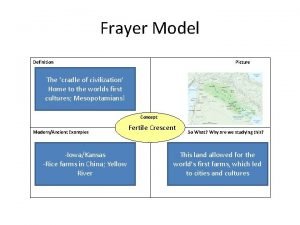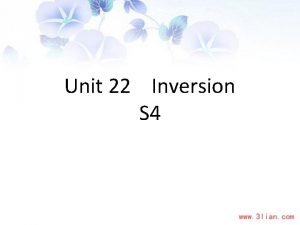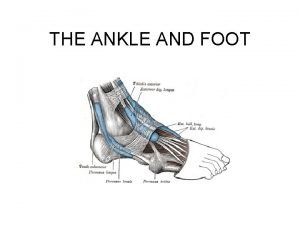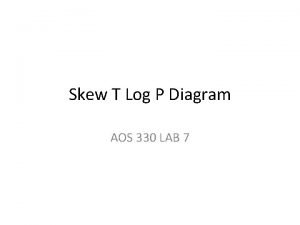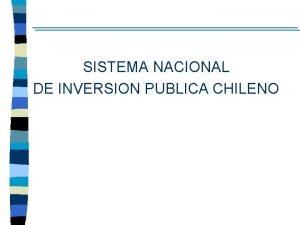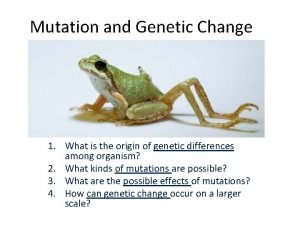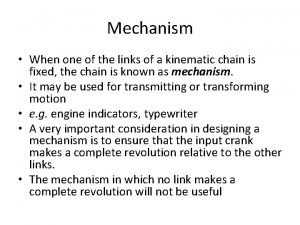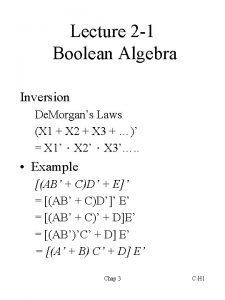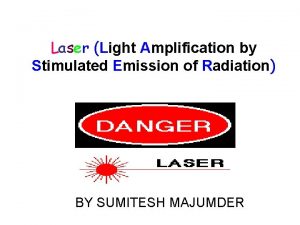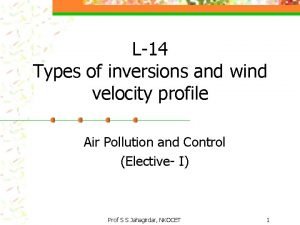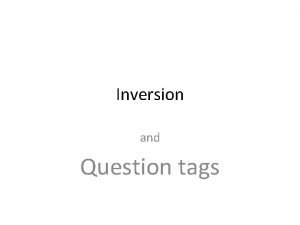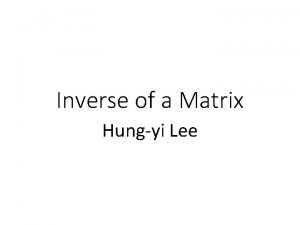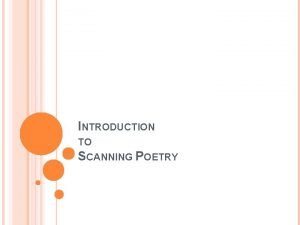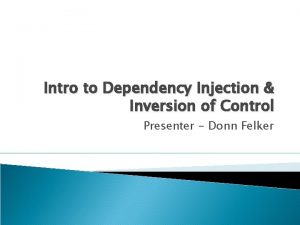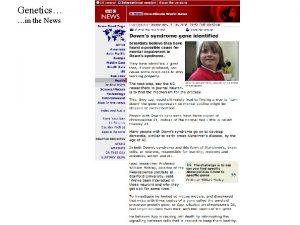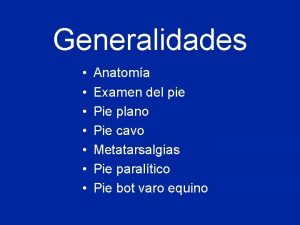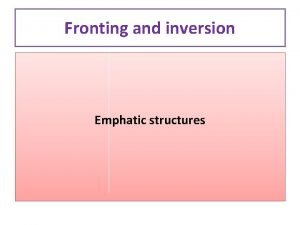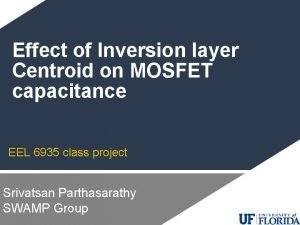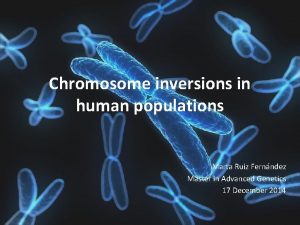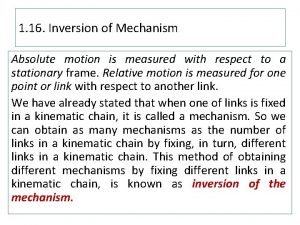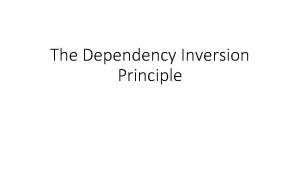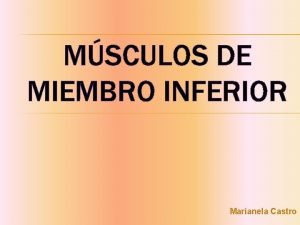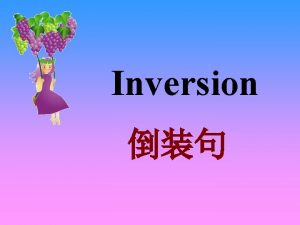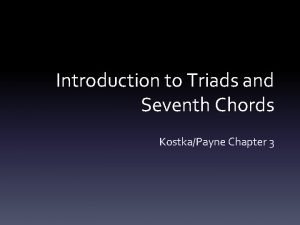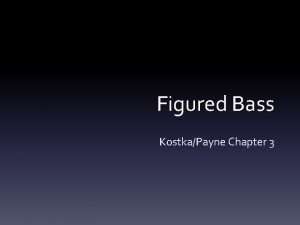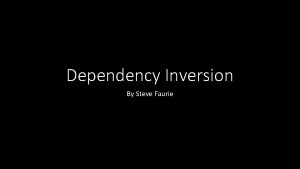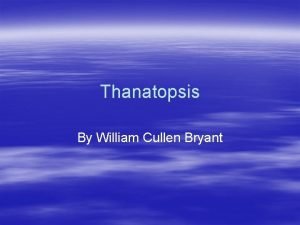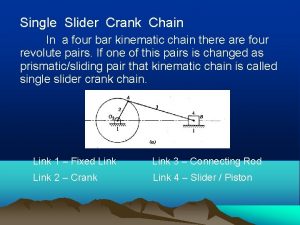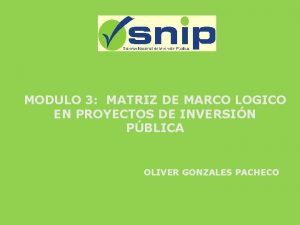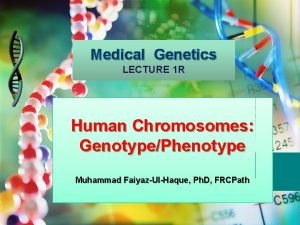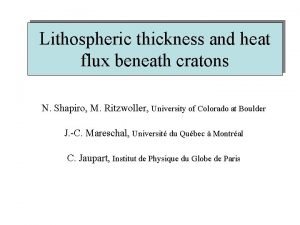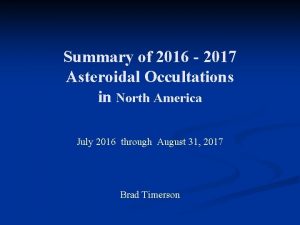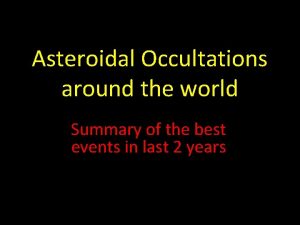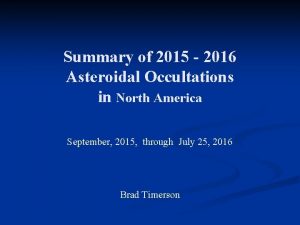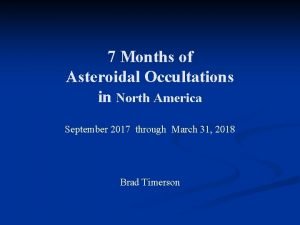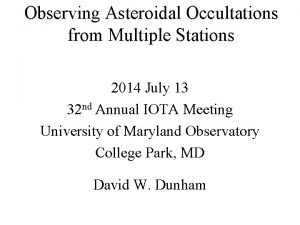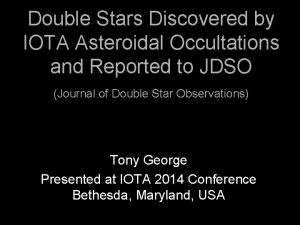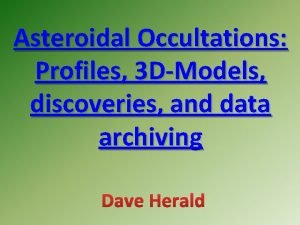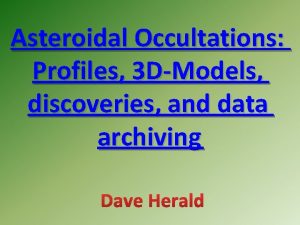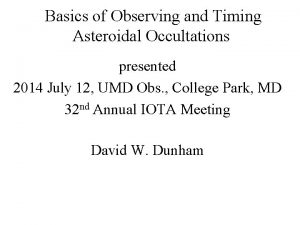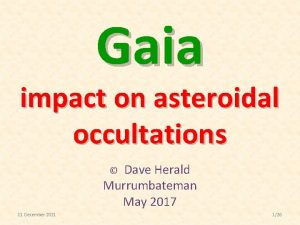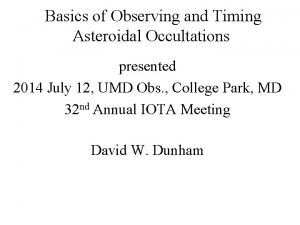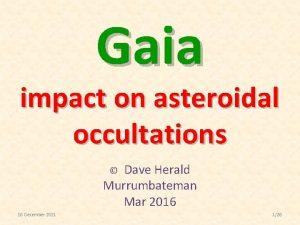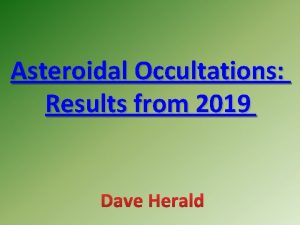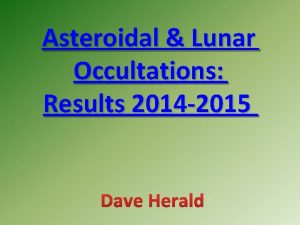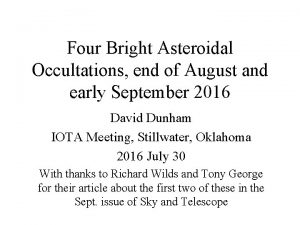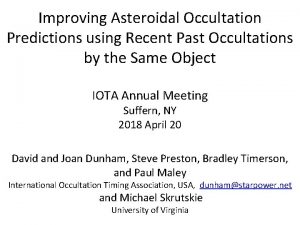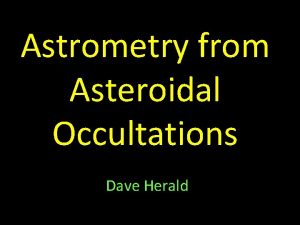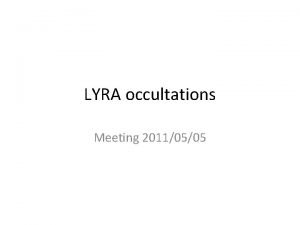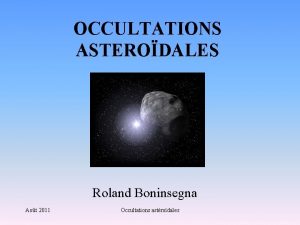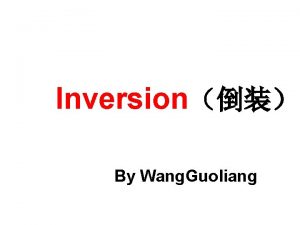Inversion Model Summary of Asteroidal Occultations Historical Model

















































- Slides: 49

Inversion Model Summary of Asteroidal Occultations Historical Model Fits Multi - Model Fits Multi-Year Model Fits Brad Timerson, IOTA Annual Meeting October, 2015

Historical Model Fits Do present modeling techniques fit old events? Multi - Model Fits Does one model fit better than another? Multi-Year Model Fits How do models fit the same asteroid over time?

Introduction to Inversion Models “The knowledge of basic physical characteristics of asteroids – the spin rate, the spin axis orientation, the shape, the size, the mass, the spectral type, etc. – is important for understanding the history and the current state of the asteroid population. Apart from a few asteroids directly imaged by spacecraft, our knowledge about asteroid physical properties is based on remote sensing techniques. And from all these techniques, time-resolved photometry is by far the most important source of information because it is in principle available for all known asteroids. The lightcurve inversion method developed by Kaasalainen & Torppa (2001) and Kaasalainen et al. (2001) is a powerful tool for deriving asteroid shapes and spins from their lightcurves observed over several apparitions. So far, the lightcurve inversion method has led to models of about one hundred asteroids. The models have been published in several papers (Kaasalainen et al. 2002 b, 2004; Torppa et al. 2003; Durech et al. 2009, for example). “ “Most DAMIT models were derived from photometric data by the lightcurve inversion method. Some of them have been further refined or scaled using adaptive optics images, infrared observations, or occultation data. ” (J. Durech, V. Sidorin, and M. Kaasalainen, 2010)

Historical Model Fits Do present modeling techniques fit old events? Inversion Model fits – 1979 to present

11 December 1979 – 3 Juno

29 May 1983 – 2 Pallas

21 January 1991 – 230 Athamantis

10 December 1993 – 85 Io

21 March 1998 – 39 Laetitia

2 July 1999 – 41 Daphne

10 February 2004 – 34 Circe

12 December 2004 – 85 Io

13 August 2005 – 89 Julia

17 May 2005 – 54 Alexandra

10 January 2007 – 44 Nysa

14 January 2007 – 26 Freia

18 February 2007 – 55 Pandora

6 June 2008 – 5 Astraea

4 June 2010 – 80 Sappho

21 August 2010 – 16 Psyche

26 January 2011 – 11 Parthenope

9 March 2011 – 72 Feronia

22 April 2011 – 17 Thetis

Multi - Model Fits For those asteroids having more than one model, does one model fit better than another?

29 October 2004 – 8 Flora – Model 1

29 October 2004 – 8 Flora – Model 2

12 June 2006 – 2 Pallas – Model 1

12 June 2006 – 2 Pallas – Model 2

22 January 2008 – 13 Egeria – Model 1

22 January 2008 – 13 Egeria – Model 2

Multi-Year Model Fits How do models fit the same asteroid over time?

13 April 2007 – 19 Fortuna

18 June 2008 – 19 Fortuna – 1 year later

3 October 2006 – 25 Phocaea

16 April 2012 – 25 Phocaea – 5+ years later

9 March 2008 – 45 Eugenia

13 June 2014 – 45 Eugenia – 6+ years later

7 September 2001 – 9 Metis (5 events)

12 September 2008 – 9 Metis – 7 years later – Model 1

12 September 2008 – 9 Metis – 7 years later – Model 2

29 December 2008 – 9 Metis – 7 years later

7 March 2014 – 9 Metis – 12. 5 years later

7 October 1981 – 88 Thisbe (2 events)

21 February 2007 – 88 Thisbe – 25+ years later

22 November 1982 – 93 Minerva (3 events)

24 December 2010 – 93 Minerva – 28 years later

6 September 2014 – 93 Minerva – 32 years later

References “DAMIT: a database of asteroid models” J. Durech , V. Sidorin, and M. Kaasalainen, 2010 http: //astro. troja. mff. cuni. cz/projects/asteroids 3 D/download/durech_et_at_damit_preprint. pdf Webpage http: //astro. troja. mff. cuni. cz/projects/asteroids 3 D/web. php

Comments? Questions?
 Linear algebra
Linear algebra Historical origins of the health belief model
Historical origins of the health belief model Frayer model with picture
Frayer model with picture Inversion grammar
Inversion grammar Inverted vs everted
Inverted vs everted Skew t log p
Skew t log p Inversion publica chile
Inversion publica chile Plain style poetry
Plain style poetry Parody inversion point
Parody inversion point Paracentric and pericentric inversion
Paracentric and pericentric inversion Bull engine mechanism
Bull engine mechanism Allegory literary definition
Allegory literary definition X xy boolean algebra
X xy boolean algebra Properties of laser light
Properties of laser light Inversion types
Inversion types Negative adverb inversion
Negative adverb inversion Question formation french
Question formation french Negative adverbial
Negative adverbial Additive inverse of matrix
Additive inverse of matrix Metrical inversion
Metrical inversion Dependency injection inversion of control
Dependency injection inversion of control News
News Pie egipcio
Pie egipcio Emphatic in a sentence
Emphatic in a sentence Ciclo de vida de un proyecto de inversión
Ciclo de vida de un proyecto de inversión Inversion layer mosfet
Inversion layer mosfet Bone revolves around its own longitudinal axis
Bone revolves around its own longitudinal axis Paracentric vs pericentric inversion
Paracentric vs pericentric inversion Inversion of mechanism
Inversion of mechanism Inversion de tobillo musculos
Inversion de tobillo musculos Dependency inversion principle example
Dependency inversion principle example Mars pathfinder priority inversion
Mars pathfinder priority inversion Proyecto de inversion cafeteria
Proyecto de inversion cafeteria Inversion de tobillo musculos
Inversion de tobillo musculos Cuadrado femoral
Cuadrado femoral Rewrite the following sentences using inversion
Rewrite the following sentences using inversion Inversion with neither nor
Inversion with neither nor 664-765-4342
664-765-4342 664-765-4342
664-765-4342 Elementos basicos del flujo de efectivo
Elementos basicos del flujo de efectivo Dependency inversion principle simple example c#
Dependency inversion principle simple example c# Boundaries of cortical mastoidectomy
Boundaries of cortical mastoidectomy Lemperts endaural incision
Lemperts endaural incision No inversion
No inversion Thanatopsis by william cullen bryant analysis
Thanatopsis by william cullen bryant analysis Example of single slider crank chain
Example of single slider crank chain Introduccion de inversion
Introduccion de inversion Ejemplo de matriz de marco logico de un proyecto ambiental
Ejemplo de matriz de marco logico de un proyecto ambiental Chromosome inversion
Chromosome inversion Seismic inversion
Seismic inversion


